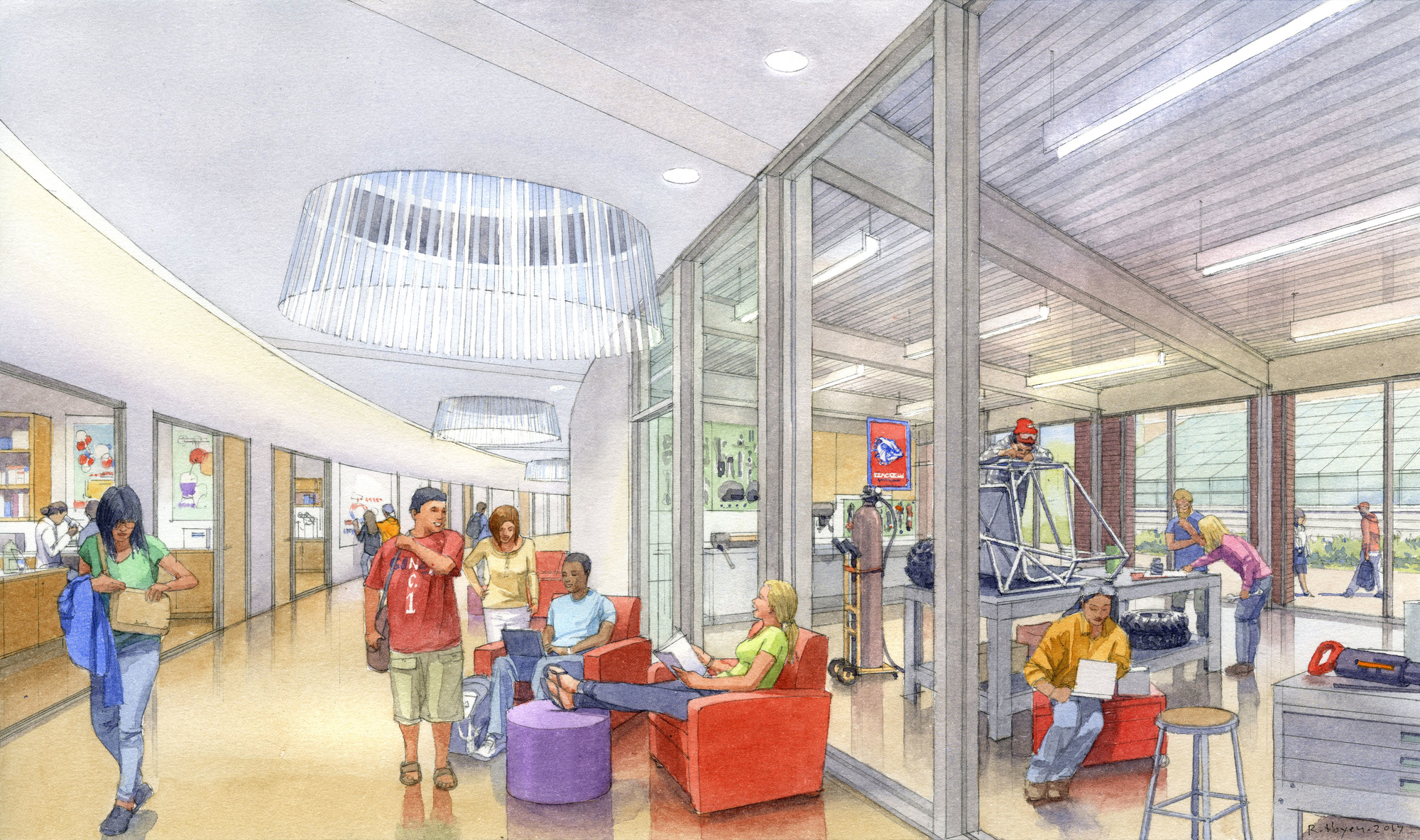A Transformative Combination of Educational and Research Opportunities
The Gonzaga Integrated Science and Engineering Building will support new opportunities for faculty and students to work across the disciplines through interdisciplinary and multidisciplinary problem-based initiatives. The new facility will be the symbol and the foundation that will catalyze this change at Gonzaga. It will be dedicated to both innovative teaching and research activities. The project is designed by SRG in a joint effort with Integrus Architecture out of Spokane, WA, and Research Facilities Design out of San Diego, CA.
Size
65,471
Location
Spokane, WA
Project Tags
Media
Journal of Business, Gonzaga to Begin Work on Integrated Science and Engineering Facility, August 29, 2019

New Opportunities for Gonzaga University
By highlighting the extraordinary potential of faculty and students to work in multidisciplinary collaborations on real-world projects, this new facility will reflect the Jesuit mission of service to the world. Further, by facilitating new opportunities for industry partners, advanced research, and public outreach, the building will benefit from and enrich the science/engineering community in the Spokane region. By bringing together the diverse academic disciplines of the sciences and engineering, it will encourage study at the intersection of the disciplines, where the most innovative discoveries and the most productive advancements in both the sciences and engineering are currently being made.

Program
The program for the Integrated Science and Engineering Building at Gonzaga consists of four types of spaces focused on student learning: general classrooms, student project areas, teaching labs dedicated to a specific discipline but with flexibility to adapt over time and faculty / student research spaces which are specific to areas of research but can adapt over time. In addition, the program also includes faculty offices and student study areas to create a holistic range of experiences.

Maximizing Interaction Between Disciplines
Coffee and snacks will attract students and faculty to a large central gathering space on the ground level where student projects and ongoing research endeavors will be on display. Adjacent to this central gathering space will be an innovation center, which will house classes that bring together multiple disciplines. Large open student project spaces will also be located on the ground floor with access directly to the Cataldo Way to allow students outside of the Science and Engineering disciplines visibility to view the student learning that occurs in the building. They will be designed to be open in order to create a studio atmosphere and promote flexibility. Teaching Labs will be across the corridor with a student interaction zone between that allows for the meeting of students and faculty to occur naturally thereby enriching the collaboration between disciplines.

